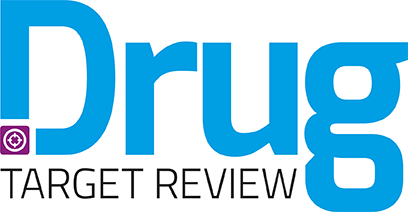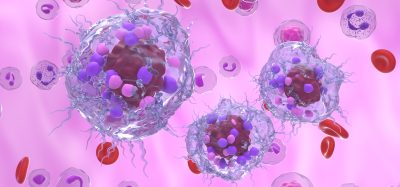Promising Alzheimer’s drug earns FDA fast-track designation
Posted: 4 February 2025 | Drug Target Review | No comments yet
Posdinemab, being investigated by Johnson & Johnson, has received FDA fast-track status. Hear from Dr Fiona Elwood as she explains how Johnson & Johnson’s precision medicine approach could transform Alzheimer’s treatment.

Alzheimer’s disease is a progressive and devastating neurodegenerative condition that affects millions of people worldwide. This disease primarily leads to memory loss, cognitive decline, and significant emotional and physical challenges for both patients and their carers. As brain cells die and the connections between them break down, individuals with Alzheimer’s disease experience difficulties with daily tasks and, eventually, loss of independence. Currently, there is no cure, and available treatments can only temporarily alleviate symptoms, making the need for new, effective therapies more urgent than ever. The disease places a heavy burden on healthcare systems and families, and its prevalence is expected to rise, especially as the global population continues to age.
In this article, we spoke with Fiona Elwood, PhD, Vice President and Disease Area Stronghold Leader for Neurodegeneration at Johnson & Johnson. Elwood provided valuable insights into the company’s innovative approach to fighting Alzheimer’s disease, particularly through precision medicine. Her expertise offers a closer look at how Johnson & Johnson’s research is shaping the future of care for those living with this devastating disease.
Strategic approach to precision medicine
With an extensive background in neuroscience, Elwood oversees the science and strategy behind J&J’s neurodegeneration pipeline. “Essentially, I’m responsible for the science and strategy behind the neurodegeneration pipeline, from deciding which targets to work on and how to approach them, to developing the necessary biomarkers and positioning for our clinical programs,” she explains. Her role ensures that J&J’s work is at the forefront of the field, driven by robust science and strategic precision.
J&J’s focus spans three key areas within neuroscience: neurodegeneration, psychiatry, and ophthalmology. Through the principles of precision medicine, the company tailors treatments to specific disease mechanisms, leveraging biomarkers to identify patient subgroups that can benefit most.
Fast-tracking Posdinemab
One of J&J’s most promising Alzheimer’s disease drug candidates, Posdinemab, has recently been granted fast-track designation by the U.S. Food and Drug Administration (FDA). This monoclonal antibody targets phosphorylated tau, a protein central to Alzheimer’s disease. Tau plays a vital role in stabilising microtubules, which are essential components of the cell structure that support and transport nutrients within nerve cells. In Alzheimer’s, however, Tau becomes abnormal, forming twisted tangles within the brain’s neurons. These tangles disrupt neuronal function, leading to their degeneration and death, which in turn contributes to the cognitive decline and memory loss that characterise the disease. “Posdinemab is designed to block the spread of tau from one neuron to another,” Elwood explains. As a result, the drug could potentially slow disease progression. Elwood highlights the significance of the fast-track designation, saying, “This designation could help with speeding up the development of the molecule.”
Currently in Phase IIb clinical trials, the development of Posdinemab marks a significant step forward. The fully enrolled trial employs innovative plasma biomarkers to pre-screen patients, reducing the need for extensive PET scans and ensuring the inclusion of the right participants – those at the very early stages of Alzheimer’s disease.
Predictive power of Tau in Alzheimer’s disease
Tau protein is one of two key pathological markers of Alzheimer’s disease, the other being amyloid beta plaques. What makes tau particularly compelling as a target is its predictive power. “The levels of tau or the amount of aggregation of tau and the distribution of tau aggregates in the brain don’t just correlate with neurodegenerative symptoms, but they can also predict the progression of Alzheimer’s disease and the onset of cognitive impairment,” Elwood explains.
The development of biomarkers – spanning PET imaging and blood tests – enables researchers to track tau pathology long before overt symptoms appear. This opens the door for early intervention, potentially preventing the progression of cognitive decline before it becomes severe.
A data-driven approach
J&J’s commitment to data-driven decision-making is evident in the design of the Phase IIb trial for Posdinemab. “We’re fully committed to learning as much as we can from every patient, every program, every piece of data,” says Elwood. The trial is groundbreaking as it is the first to utilise plasma biomarkers for pre-screening, streamlining the enrolment process and ensuring a more targeted patient population.
The trial focuses on individuals with intermediate levels of tau, those in the early stages of Alzheimer’s disease who have enough tau pathology to enable measurable drug effects. Elwood explains, “We think we can test this biological hypothesis: that we’re going to block the spread and be able to determine whether this can also slow the progression of cognitive decline in these patients.”
Addressing the global Alzheimer’s crisis
Alzheimer’s disease is one of the top ten leading causes of death worldwide, with rates continuing to climb. This stark reality underpins J&J’s sense of urgency in advancing new treatments. Elwood highlights the broader implications, stating, “Developing new therapeutic strategies that are both safe and effective in slowing, or even, in the future, halting the progression of Alzheimer’s disease could have a profoundly positive impact on global public health, particularly with an ageing population.”
The FDA’s fast-track designations for Posdinemab and J&J’s anti-Tau active immunotherapy, JNJ-2056, reflect a recognition of this urgency. These innovative therapies represent a new frontier in Alzheimer’s care, addressing the critical need for effective treatment options.
Shaping the future of Alzheimer’s treatment
The challenges of Alzheimer’s demand a multi-faceted approach, and J&J is dedicated to addressing them from all angles. In addition to its tau-targeting treatments, the company is expanding its portfolio to incorporate other mechanisms of action. “We’re diversifying our portfolio beyond tau to other targets and molecules that could be dosed alone or even in the future as part of combinations,” Elwood reveals.
This diversification is supported by a modality-agnostic approach, utilising the latest small molecules, antibodies, and RNA-targeting technologies. J&J is also advancing biomarkers – digital, plasma-based, and PET imaging – to improve precision in identifying and treating patients.
Elwood highlights the importance of early intervention: “Stopping the progression of disease, stopping the progression of neurodegeneration, and doing it as early as possible while patients still have as much of their cognitive abilities as possible is important to have the greatest impact on patients and society.”
A vision of hope
As J&J continues its groundbreaking work in Alzheimer’s research, the company’s long-term vision remains clear: to transform the landscape of neurodegeneration care through innovation, precision, and dedication. “With precision medicine approaches, we can deliver the right molecule to the right patient, at the right time, at the right stage of disease,” says Elwood.
While challenges remain, the progress achieved by J&J offers a beacon of hope for millions of patients and families worldwide affected by Alzheimer’s disease. Through its strategic focus on biomarkers, targeted treatments, and a commitment to learning from every trial, the company is leading the charge toward a future where Alzheimer’s no longer holds its devastating grip on humanity.
Related topics
Antibodies, Biomarkers, Clinical Trials, Drug Discovery, Drug Discovery Processes, Precision Medicine
Related conditions
Alzheimer's disease (AD), Dementia
Related organisations
Johnson & Johnson
Related people
Dr Fiona Elwood







